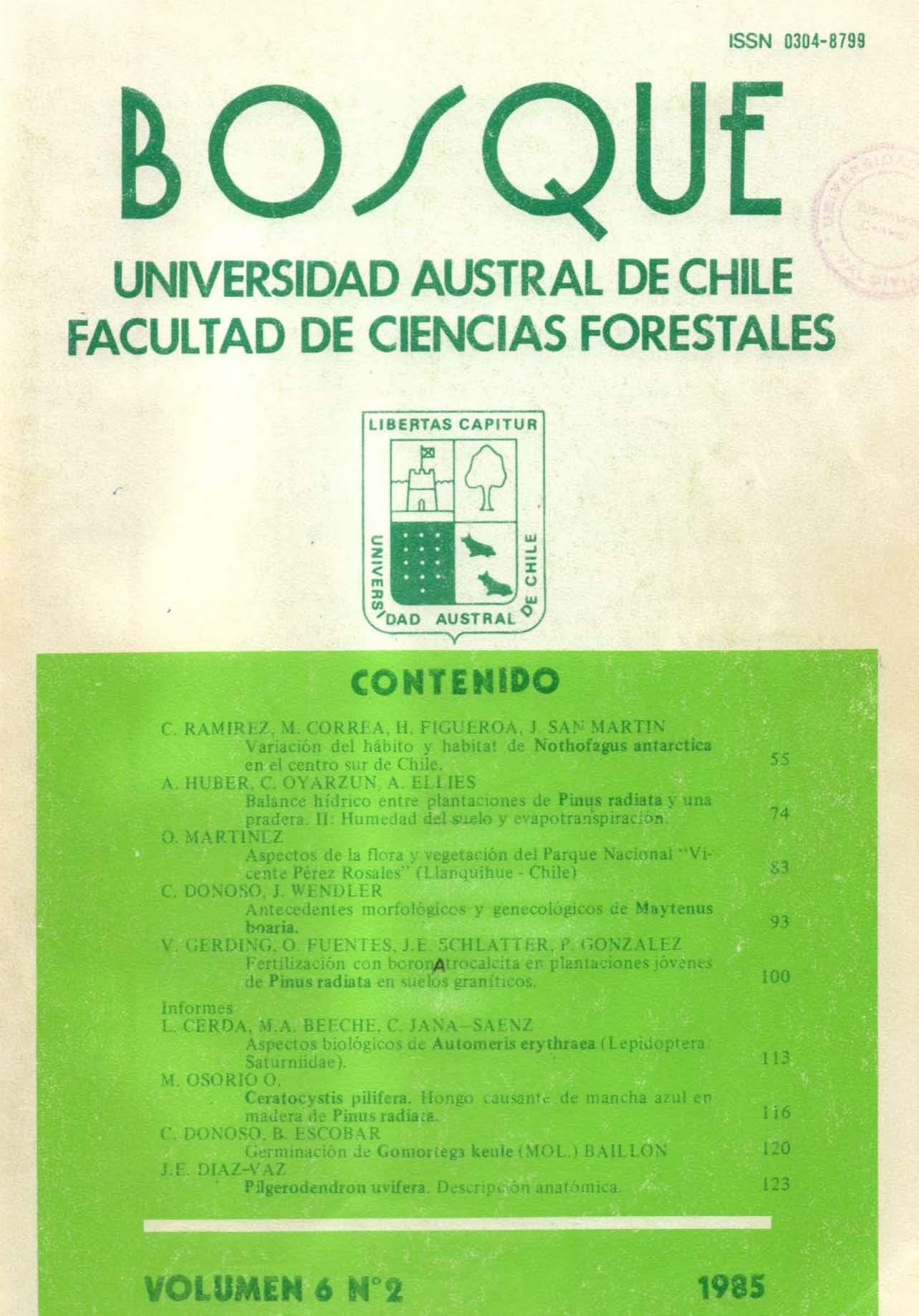Fertilización con Boronatrocalcita en Plantaciones Jóvenes de Pinus radiata en Suelos Graníticos
Main Article Content
Abstract
Pinus radiata new plantings showed a restricted growtn and evident boron insufficiency symptoms in the Traiguen-Lumaco district (38°10'S, 72°50'W). Such restrictions were associated to soils form granitic rock origin and were more intense in dry years with low rainfall. This evidences lead the present work on fertilization with Commonite in 2 and 4 years old plantations, established in a rolling landscape of in situ and coluvial granitic soils.
Commonite fertilization caused an increment of foliage boron level and disminished the tipical symptoms of this insufficiency. The effectiveness of the fertilization was influenced by age of the plantations, soil type and ground exposition. Neverthless no significant effect was detected for tree growth, that can be interpreted as caused by soil physical limitations and inadecuate water regimen.
The Commonite fertilizations with 15 g/tree scatted on top soil outline of trees, 6 g/tree and 15 g/tree in holes showed the same effects, but 15 g/tree in hole shows more effectiveness propensity in the long term.

